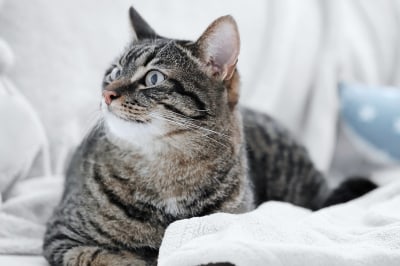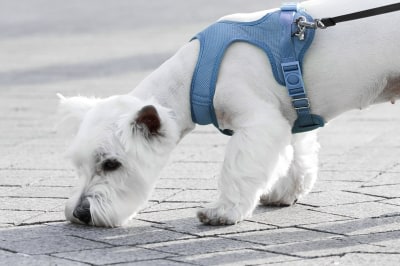Veterinary Diagnostic Lab
At Putnam North Animal Hospital, we have advanced tools within our vet lab to help diagnose your pet's medical issues. Our vets can perform a variety of diagnostic tests and procedures to allow us to have the best view possible of your pet's overall health.
We use radiographic and ultrasonic imaging that allows us to produce highly detailed images of your pet's internal structures as well as ocular tonometry, thermal imaging, and standard testing to diagnose your pet and provide the best treatment options possible.
With our diagnostic imaging capabilities, we can efficiently produce diagnostic information about your pet's condition in real-time and provide immediate treatment options.

In-House Lab & Veterinary Pharmacy in Oklahoma City
We are proud to have an in-house vet laboratory allowing us the opportunity to diagnose your pet's symptoms quickly and begin treating them as soon as possible.
Our pet pharmacy in Oklahoma City is stocked with a range of therapeutic diets and medications, allowing us to have quick access to any medications that your pet may need during their visit with us.

Our Veterinary Diagnostic Services
Using our in-house veterinary diagnostics lab we are pleased to offer advanced diagnostic testing such as bloodwork, urinalysis, and digital imaging to allow our vets to provide rapid diagnosis of your pet's medical issues.
-
Radiography (Digital X-rays)
Our vets may utilize a radiograph (digital x-ray) in order to examine your pet's internal systems to reveal information that may be invisible from the outside assisting in the diagnosis of your pet's condition.
Radiography is safe, painless, and non-invasive. This procedure only uses low levels of radiation. The levels of exposure required to perform radiography are low enough that even pregnant females and very young pets are able to safely undergo this diagnostic procedure.
Radiographs can be used to evaluate bones and organs, and diagnose conditions including broken bones, chronic arthritis, bladder stones, spinal cord diseases, and some tumors.
-
Ultrasound
Diagnostic imaging allows our team of veterinary professionals the opportunity to create extremely detailed images of your pet's internal structures.
Ultrasound imaging uses high-frequency sound waves on a part of the body in order to produce images of the inside of the body.
Because we capture ultrasound images in real time, we can see the structure and movement of your pet's internal organs, as well as blood flowing through the blood vessels.
Having this valuable technology available to our vets in our in-house lab provides our veterinary team with the ability to diagnose your pet quickly allowing them to begin treatment sooner.
-
Bloodwork
At our vet lab in Oklahoma City, our veterinary team is able to perform a variety of blood tests allowing us to have a full understanding of the overall health of your pet.
Some of the veterinary blood tests we do at our animal hospital are CBC (complete blood count), complete chemistry profiles, kidney profiles, liver profiles including bile acids, cortisol levels, heart biomarkers tests, and thyroid tests including T4 and TSH levels.
-
Urinalysis
Urinalysis is a key diagnostic test that provides your vet with essential insights into the physical and chemical properties of your pet's urine.
Urinalysis is primarily used to assess the health of your animal's kidneys and urinary tract system, but it can also be helpful in detecting issues in other organ systems and is important for diagnosing metabolic diseases such as diabetes.
This diagnostic test is useful for pets that are both sick and healthy, providing more insight into their health, and should be a standard part of their routine care.
Our advanced laboratory uses computerized imaging and artificial intelligence (AI) to give us the best possible evaluation of your pet’s urine.
-
Fecal Exam
A fecal exam is a microscopic examination of your pet's feces. Our advanced laboratory uses centrifugation and computerized imaging and artificial intelligence (AI) to give us the best and most complete fecal sample evaluation.
The ultimate goal of a fecal exam is to identify and treat any GI infections that could be compromising your pet's health and even the health of your family. Fecal exams provide your vet with the opportunity to monitor your pet for intestinal parasites such as roundworms or hookworms.
Parasites can not only cause your pet to be uncomfortable or in pain but also could lead to serious complications. Some of these parasites even have the ability to be transmitted to humans.
Since these parasites live in your pet’s gastrointestinal tract, they are often hidden from view. A fecal exam is the only guaranteed way to diagnose these parasites.
Annual fecal examinations are a crucial part of your pet's ongoing routine veterinary care.
-
ECG/EKG
If your veterinarian has performed a routine physical examination and has become concerned about potential heart disorders, they may recommend thorough testing be performed. In these cases, our vets may take chest X-Rays and an electrocardiogram (ECG / EKG).
This procedure can be completed easily and quickly. It reveals data that may be integral to your pet's diagnosis. In other cases, a cardiac ultrasound may be required to identify disorders in the chambers of the heart.
-
Digital Dental X-Rays
If your cat or dog is suffering from periodontal disease, much of this damage occurs below the gum line where it can't be easily seen. Digital dental X-Rays help your vet get an overall view of your pet's oral health.
Digital X-Rays are safer for your pet. They allow our team of veterinary professionals to examine the roots, bones and internal anatomy of your cat or dog's teeth.
With digital X-Rays, the risk of radiation exposure for your pet is significantly lower than with traditional X-Ray technology. We are able to see below the surface of your pet's gum line allowing us to provide a full evaluation of your pet's dental situation.
This technology allows your Oklahoma City vet to see results immediately as well as view them on a computer monitor allowing us to share our findings easier.
-
Ocular Tonometry
Ocular tonometry is when your vet measures the pressure within the eye (intraocular pressure) using a tonometer which uses a stream of air. This diagnostic test typically does not require sedation and is usually painless, making it a useful diagnostic tool.
Your vet will use this measurement of intraocular pressure to help diagnose various conditions of the eye, most commonly glaucoma.
-
Thermal Imaging
Our vets use thermal imaging to assist in the diagnosis of various internal conditions within your pet. Thermal imaging includes the use of a highly sensitive infrared camera that monitors your pet and allows your vet to measure the electromagnetic energy emitted from them.
Your vet will then use specialized software to convert this data into temperature measurements allowing them to monitor changes within the circulatory, nervous, and musculoskeletal systems.



